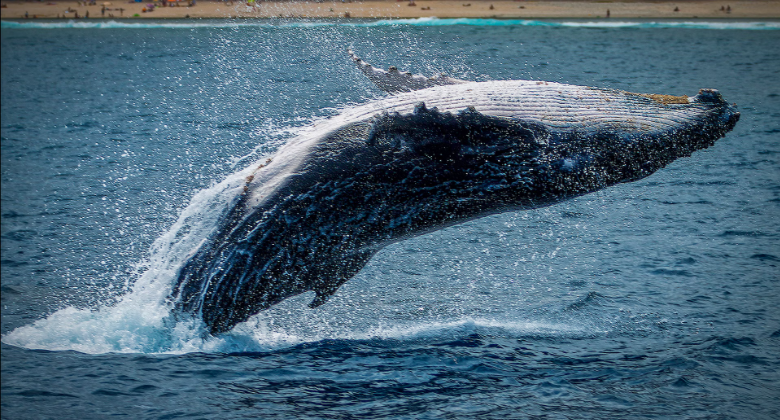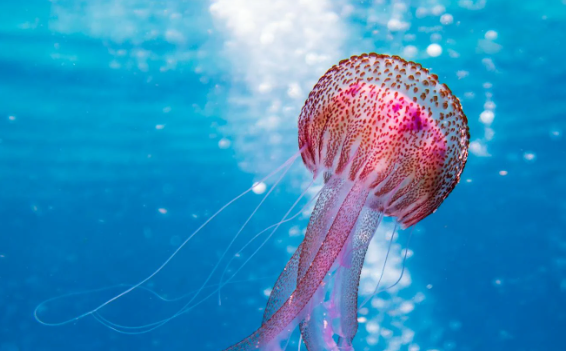Why Do Whales Sing? It’s Time to Find it Now!

© Rémi Boudousquié / Unsplash
These aquatic animals are definitely majestic. They are big, powerful, and look beautiful when they jump out of the water. But how much do we really know about whales? Have you ever wondered why some of the largest animals in the world sing? What do they use it for? What sounds do they make, and how do they make them? Well, we have got all the answers for you. Here is an entire guide to whale singing and more!
What Are Whales?
Whales are large marine mammals. They belong to the order Cetacea, which also includes dolphins and porpoises. They are characterized by their streamlined bodies, blowholes on the top of their heads for breathing, and a layer of fat that helps them stay buoyant and insulated in cold water.
There are two main types of whales: toothed whales (odontocetes) and baleen whales (mysticetes). Toothed whales have teeth and primarily feed on fish and squid. On the other hand, baleen whales have baleen plates in their mouths instead of teeth. They use them to filter small organisms like krill from the water.
Where Are Whales Found?
Whales are found in oceans around the world and play crucial roles in marine ecosystems. They are known for their complex communication, social structures, and remarkable intelligence. Some well-known species of whales include the blue whale (the largest animal on Earth), humpback whale, sperm whale, and killer whale (orca). Whales are also known for their long migrations. Additionally, they have been the focus of conservation efforts due to threats such as habitat degradation, pollution, and climate change.
What Is Whale Singing?
Whale singing has long been a mystery apart from the well-known clicks of toothed whales. While various baleen whales produce moans, only males of specific species, including humpback, minke, some blue and fin whales, and the distantly related bowhead whales, are known for singing. Recent dissections of these whales have revealed vocal cords or folds in their voice boxes, similar to human vocal cords. These structures are believed to vibrate as air passes over them, generating sound.
Unlike human vocal cords, which act like sliding doors to restrict airflow, whale vocal cords are more intricate and connect to special sacs in the throat. It is theorized that, when underwater, air can move between these sacs and the lungs. Furthermore, this allows whales to sing without losing air. However, there have been challenges in observing or dissecting these massive and protected creatures.
Why Do Whales Sing?
One of the primary reasons for whale singing, especially among male humpback whales, is believed to be associated with mating. Male humpbacks often sing complex and melodious songs to attract females. The songs may play a role in establishing dominance and attracting potential mates during the breeding season.

Whales are also highly social animals, and their songs may serve as a form of communication within their groups. The intricate structure of the songs, which can include repeated patterns and themes, may convey information about the individual’s identity, location, or emotional state. Additionally, singing may also play a role in strengthening social bonds within whale populations. It is observed that whales within the same region or ocean basin often sing similar songs. This shared vocal repertoire might contribute to a sense of community and connectivity among individuals.
How Do They Sing?
Whales utilize a diverse repertoire of sounds, including yaps, fin slaps, growls, and groans, as a means of communication. However, only five whale species, among them the humpbacks, are recognized for their remarkable singing abilities, with humpbacks standing out as the unparalleled musical maestros of the sea.

Male humpback whales, especially during their juvenile years, embark on a process of learning songs in fragments and bits, engaging in a form of social learning. Interestingly, while females are known to vocalize, they do not participate in the intricate singing. The learning process for these songs involves mastering a particular tune, which then undergoes gradual changes as the whale population collectively reorganizes the melodies over days, weeks, and even years.
What Is the Music Structure Like?
The structure of these songs is intricate, reminiscent of the repetition and rhymes found in poetry. What’s intriguing is that all the males from the same ocean basin share and sing the same tune, maintaining a form of collective harmony until the song is further modified. The captivating nature of these whale songs is exemplified by a recording from a humpback whale off the coast of Maui, Hawaii. Composer David Rothenberg has translated this recorded song into human music, providing a fascinating glimpse into the musical world of these oceanic giants.
Other Fun Facts About Whales
Can’t get enough of these mammal pals? Here are 10 fun facts about whales:
5. Humpback Whales Don’t Eat for Half a Year
Humpback whales in the Southern Hemisphere exhibit a remarkable behavior of fasting for a significant portion of the year. During their annual migration, which spans 5.5 to 7.5 months, these whales rely on their fat reserves and do not engage in feeding. The migration takes them from their tropical breeding grounds to the nutrient-rich waters of the Antarctic, where they primarily feed on krill.

This fasting period is particularly notable because humpback whales need to sustain themselves and maintain energy for various activities during migration, including courtship, mating, and calving. The journey between breeding and feeding grounds involves covering vast distances, and the whales manage this impressive feat by utilizing the energy stored in their fat reserves.
4. Bubble Net Feeding
Certain whale species engage in a fascinating feeding behavior known as “bubble net feeding.” This cooperative feeding strategy involves a group of whales working together to blow bubbles in a circular pattern around their prey. The bubbles create a barrier that entraps the prey, preventing them from crossing through the bubble net. This ingenious technique makes it considerably easier for the whales to capture and consume their prey.
The coordinated effort of blowing bubbles is a remarkable example of social behavior among whales. Typically, a group of whales will work in unison to create and maintain the bubble net, displaying a high level of cooperation and communication within the group.
3. Male Narwhals Have Tusks From Their Teeth
Narwhals, typically found in the Arctic waters, exhibit a distinctive feature where usually only male individuals possess a long, spiral tooth known as a tusk. This unique tusk, which develops from one of their teeth, serves multiple functions in their daily lives.
Primarily, the narwhal tusk is utilized for foraging purposes, helping the whales navigate and locate food in their icy environment. Additionally, the tusk plays a role in displays of dominance within the narwhal population. Male narwhals may use their tusks to assert dominance, possibly during mating rituals or social interactions.
2. Killer Whales Are Actually Dolphins
Orcas, commonly known as “killer whales,” are the largest members of the dolphin family, challenging the common perception of them as whales. Despite their name, killer whales are actually a species of oceanic dolphins. Renowned as the ocean’s top predators, they exhibit a remarkable versatility in their diet, preying on a diverse array of marine species.
1. The Largest Animal on the Planet: The Antarctic Blue Whale
The Antarctic blue whale, a sub-species of the blue whale, holds the title of being the largest animal on the planet. Distinguishing itself as the biggest among its blue whale counterparts, these majestic creatures boast remarkable dimensions, with weights reaching up to a staggering 200 tons, equivalent to approximately 33 elephants, and lengths extending up to 30 meters.
Feeding primarily on krill, Antarctic blue whales showcase an astonishing appetite, consuming around 3,600 kilograms of these tiny crustaceans daily. This massive dietary intake is a testament to the energy requirements of sustaining such colossal bodies.
What do you think of these majestic creatures? Are there any facts you know that we haven’t mentioned? Let us know in the comments below!
You might also want to read: Decoding the Secret Language of Whales



